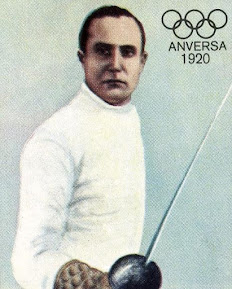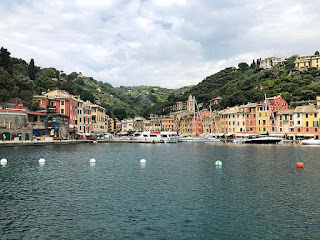Versatile athlete who excelled in several sports
Olympic cycling champion Antonella Bellutti, one of Italy’s most versatile and pioneering athletes, was born on this day in 1968 in Bolzano, the principal city of Trentino-Alto Adige, also known as Südtirol.
Antonella Bellutti celebrates after winning her
second Olympic Gold medal in Sydney in 2000
At the peak of her track cycling career, Bellutti won Olympic gold medals in the individual pursuit at the Atlanta Games of 1996 and in the points race at the Sydney Games four years later. She was also a medallist in pursuit at the 1996 and 1995 world championships and won gold in the omnium at the 1998 European championships in Berlin.
Yet her cycling career may well not have happened but for a knee injury that curtailed her career as a track and field athlete. As a teenager, she had excelled as a hurdler and in combined events such as heptathlon, winning seven youth titles and setting the Italian junior record at 100m hurdles.
She was preparing to make her Olympic hurdling debut in Barcelona in 1992 when the injury occurred. She took up cycling as part of what initially began as a rehabilitation process. In the event was never able to resume her career as a track athlete, yet revealed such talent on wheels that it opened a path to a whole new career.
As further evidence of Bellutti’s all-round sporting prowess, since retiring from competition as a cyclist she has returned to Olympic competition in bobsleigh, agreeing to be brakewoman to former luge gold medallist Gerda Weissensteiner - another native of Bolzano - as they finished seventh in the women’s two-man bob at the 2002 Winter Games in Salt Lake City.
Unlike many athletes, Bellutti did not emerge from a sporting family. Her father had been a factory worker whose passion was organ music and while her brother was a cyclist and her sister played basketball, neither continued beyond their teenage years. It was a gym teacher at elementary school who noticed in her a natural athleticism and introduced her to her first coach.
 |
| At Salt Lake City, Bellutti teamed up with Gerda Weissensteiner in the bob |
Her rise in cycling was meteoric. Just four years after taking up the sport, she won a silver medal in the individual pursuit at the 1995 UCI Track Cycling World Championships in Bogotá. She followed this with a bronze medal in the same event at the 1996 World Championships in Manchester.
The key to reaching the next level was her decision to adopted the so-called “Superman” riding position pioneered by the Scottish cyclist Graeme Obree, which allowed for greater aerodynamic efficiency and helped her break the world record twice in the lead-up to the 1996 Olympics.
In 1996 in Atlanta, Bellutti delivered a commanding performance in the individual pursuit, winning gold and becoming the first Italian woman to do so in track cycling.
Four years later, at the 2000 Sydney Olympics, she returned to the velodrome and added a second Olympic gold, this time in the points race.
 |
| Antonella Bellutti has become an advocate of the vegan lifestyle |
Since retiring from competition, Bellutti has remained deeply involved in sport. She served on the Italian National Olympic Committee (CONI) from 2000 to 2004 and was Technical Director of Italy’s national track cycling teams from 2002 to 2003.
She has also worked in sports education and sports journalism, writing a column for the Gazzettino di Venezia for six years and often contributing to TV and radio broadcasts. She published a book, La vita è come andare in bicicletta - Life is like riding a bicycle - in 2017, which among other things outlined her reasons for taking up a vegan diet.
For a while, she ran a bed-and-breakfast offering a vegan menu in Andogno, a tiny hamlet of the municipality of San Lorenzo Dorsino in the Adamello Brenta Natural Park, about 30km (19 miles) west of Trento and 30km north of Riva del Garda.
The business was opened after Bellutti had restored a former inn she had inherited from her great-grandparents. Unfortunately, it was forced to close because of the Covid-19 pandemic.
Today, Bellutti lives in Rovereto, in another part of the Trentino-Alto Adige region, and continues to inspire as a speaker, consultant, and advocate for equality in sport. She has taken a strong position in her opposition to doping in sport and has also spoken about depression among athletes and former athletes, having herself faced some mental health challenges following retirement.
She still leads an active lifestyle, listing cycling, running, mountain climbing and alpine skiing among her activities, yet participates now solely for enjoyment rather than to compete.
Travel tip:
Bolzano's main square, Piazza Walther, was named
after medieval poet Walther von der Vogelweide
Bolzano, Antonella Bellutti’s home town, is the capital of the South Tyrol region of what is now northern Italy, also known as Trentino-Alto Adige in Italian, or Südtirol in Austrian. Occupying a valley flanked by hills covered in lush vineyards, it has a population of 108,000, swelling to 250,000 with all the surrounding communities. One of the largest urban areas in the Alpine region, it has a medieval city centre famous for its wooden market stalls, selling among other things Alpine cheeses, hams and bread. Places of interest include the South Tyrol Museum of Archaeology, the imposing 13th-century Mareccio Castle, and the Duomo di Bolzano with its Romanesque and Gothic architecture. Other places of interest include Piazza Walther (Waltherplatz), the central square named after medieval poet Walther von der Vogelweide, and the Via dei Portici (Laubengasse), and historic shopping street lined with arcaded walkways. Three languages - Italian, German and a local language called Ladin - are spoken in the area, which consistently polls high among the Italian cities reckoned to have the best standard of living. The nearest airport to Bolzano is at Verona, about 150km (93 miles) to the south and accessible in approximately an hour and a half by train, although some visitors arrive from Innsbruck in Austria, just over two hours by train in the opposite direction.
Stay in Bolzano with Expedia
Travel tip:
A sweeping panorama over the city of Rovereto in
the Trentino-Alto Adige region, close to Lake Garda
The picturesque small city of Rovereto, 23km (14 miles) east of Riva del Garda and about 28km (17 miles) south of Trento, is notable for its Museum of Modern and Contemporary Art of Trento and Rovereto - one of Italy’s most important modern art museums - as well as for a 14th century castle, which contains the Italian War Museum, and for the Maria Dolens (Mary Grieving) bell, also known as the Campana dei Caduti (the Bell of the Fallen) and the Bell of Peace. The second largest swinging bell in the world, it was originally the idea of a local priest, Father Antonio Rossaro, to honour the fallen of all wars and to invoke peace and brotherhood. Cast in 1924, since 1965 it has been located on Miravale Hill outside the town and sounds 100 times at nightfall each evening. Nestled in the Vallagarina valley, it was originally a Roman outpost guarding trade routes to the Brenner Pass. It enjoyed substantial growth during the medieval and Renaissance eras, flourishing under Venetian rule and later the Austro-Hungarian Empire. Rovereto is part of the Marzemino wine region, known for its deep red varietals praised by Mozart.
Book accommodation in Rovereto with Hotels.com
More reading:
How Trebisonda ‘Ondina’ Valla became the first Italian woman to win an Olympic gold medal
The brilliance of high jumper Sara Simeoni
The bobsleigh champion honoured for sportsmanship
Also on this day:
549: Death of Saint Ercolano of Perugia
1512: Dismissal from office of statesman and diplomat Niccolò Machiavelli
1599: The death of pioneer surgeon Gaspara Tagliacozzi
1944: The birth of footballer Luigi ‘Gigi’ Riva






.jpg)
_(52190176812)_(cropped).jpg)


























